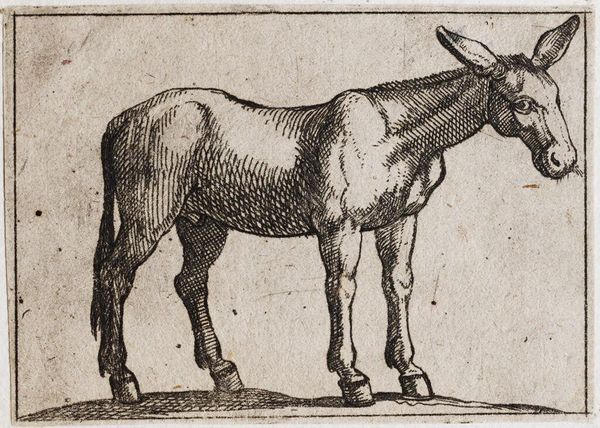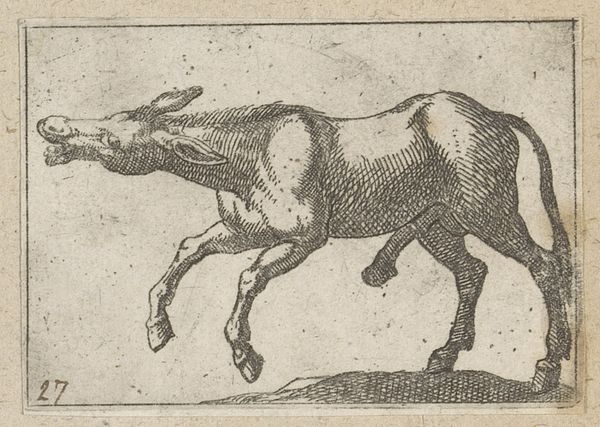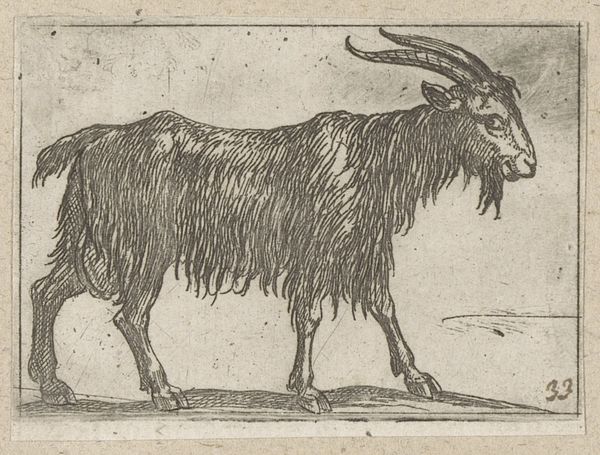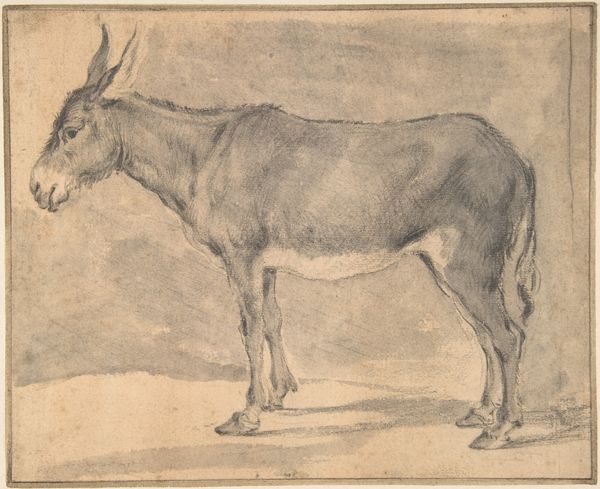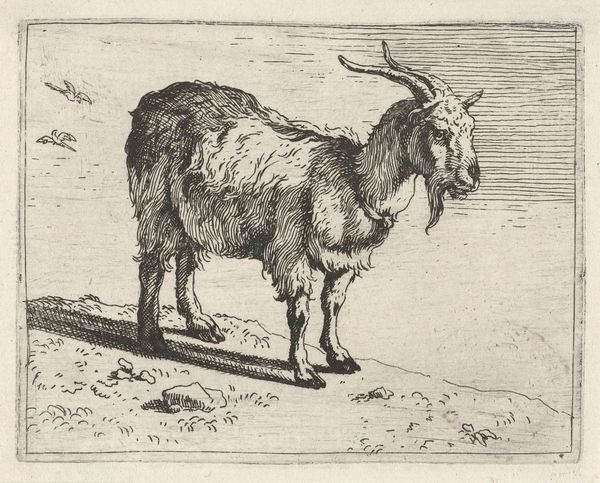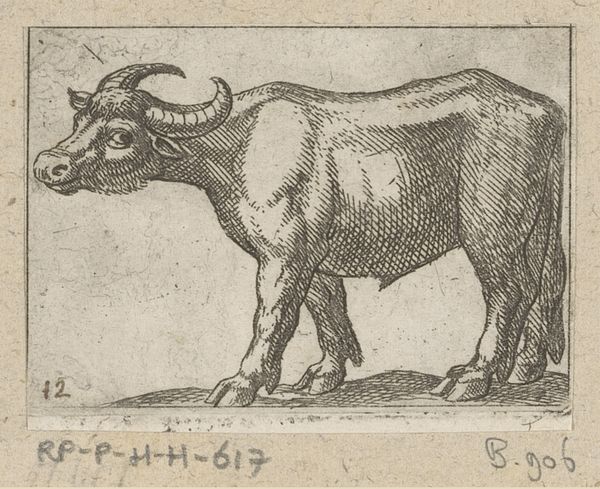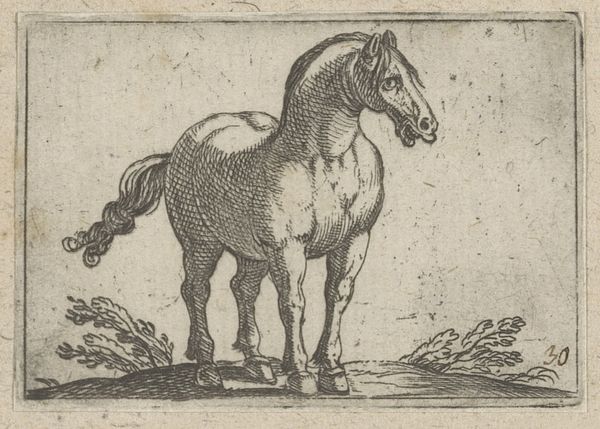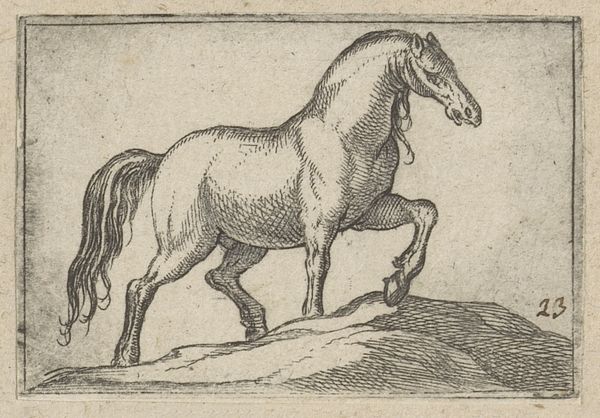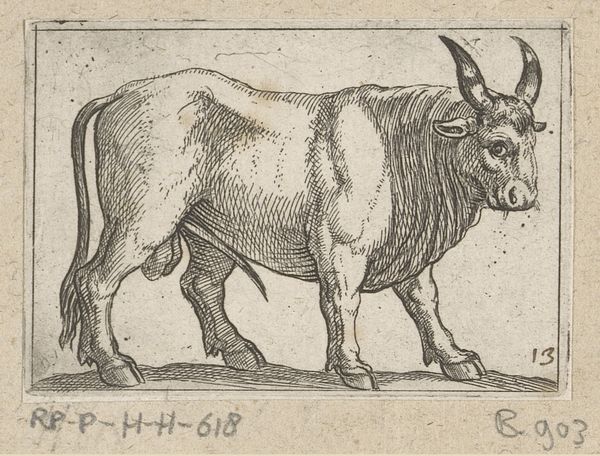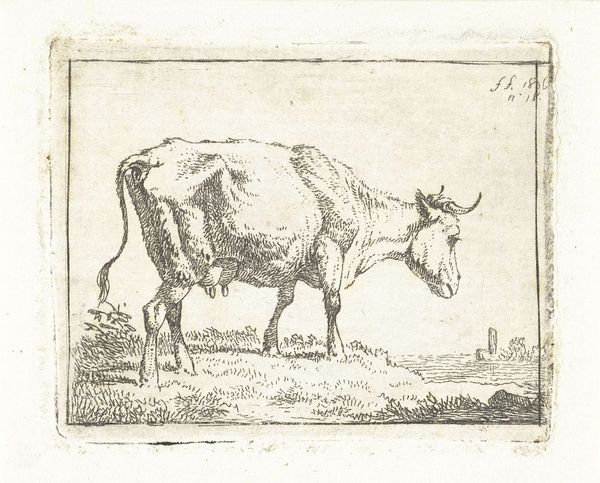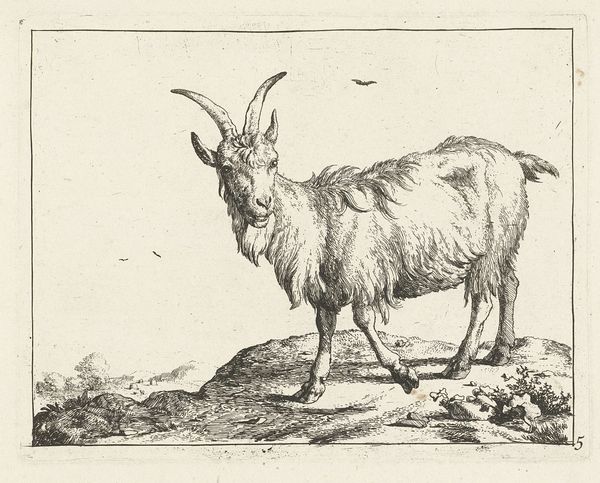
drawing, print, engraving
#
portrait
#
drawing
#
aged paper
#
toned paper
#
light pencil work
#
quirky sketch
#
baroque
#
animal
# print
#
pencil sketch
#
sketch book
#
figuration
#
personal sketchbook
#
ink colored
#
line
#
sketchbook drawing
#
sketchbook art
#
engraving
#
realism
Dimensions: height 43 mm, width 67 mm
Copyright: Rijks Museum: Open Domain
Antonio Tempesta made this etching of a standing donkey at the turn of the 17th century. The image presents a humble animal but its production was embedded in a sophisticated culture of printmaking, thriving in Europe at the time. Tempesta was working in Italy, where the Roman print market was flourishing. A boom in international trade meant that artists like Tempesta could benefit from new networks of distribution and the growth of art collecting. Printmaking was of huge importance to the institutional history of art. It was a way of democratizing art and bypassing the traditional gatekeepers such as the Academy. Here, Tempesta’s ass is given space to stand freely, a sign perhaps of the increasing liberation of art from its traditional patrons. The social conditions that shaped the production of this unassuming image are testament to a growing shift in cultural norms that privileged personal expression.
Comments
No comments
Be the first to comment and join the conversation on the ultimate creative platform.
